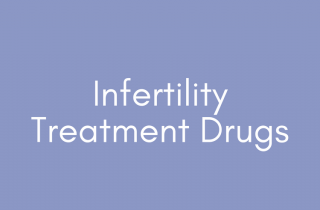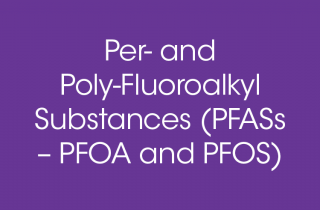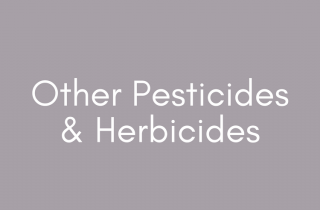Polycyclic Aromatic Hydrocarbons (PAHs)
At a Glance
Polycyclic aromatic hydrocarbons (PAHs) are a group of more than 100 chemical compounds that are prevalent in the environment and food.
They contribute to indoor and outdoor air pollution and are harmful to humans.
What are PAHs?
PAHs are fat-loving chemicals that can accumulate in breast tissue. They are formed from the combustion of organic materials. Several individual PAHs as well as other chemical mixtures containing PAHs have been classified as human carcinogens.[1] Benzo[a]pyrene (BaP) is a very abundant PAH and common component of vehicle exhaust. Several PAHs are considered mammary carcinogens. [2],[3],[4],[5]
Where are PAHs found?
PAHs are found abundantly in the atmosphere. Humans are exposed to PAHs through inhalation of motor vehicle exhaust, cigarette smoke, or wood smoke. PAHs can also be consumed through charred and grilled foods.[6] PAHs are stored in the fatty tissue of the breast and have been found in breast milk.[7]
What evidence links PAHs to breast cancer?
- Two studies found elevated incidence of breast cancer to be associated with exposure to high concentrations of traffic emissions.
- Cumulative exposure throughout a woman’s life was linked to post-menopausal breast cancer.[8]
- Women who were exposed to high levels of traffic emissions at the time of their first menstruation were more likely to experience pre-menopausal breast cancer.[9]
- Exposure around the time a woman first gave birth resulted in an increased risk of developing post-menopausal breast cancer.[10]
- Another study found a strong association between indoor PAH exposures (first- and secondhand smoke, grilled/smoked food consumption, indoor stove or fireplace use) and breast cancer. Women who had high indoor exposures had a 30 to 50 percent increased incidence of breast cancer. [11],[12]
- Among women exposed to PAHs in the workplace, lifetime exposure was not associated with breast cancer; however, exposures prior to age 36 increased breast cancer risk by 75 percent.[13]
- Men who were occupationally exposed to high levels of PAHs and had mutations in tumor suppressor genes BRCA1 and BRCA2 had a higher incidence of breast cancer. [14]
- Some PAHs have been found to bind to and alter DNA,[15] while others have the ability to mimic and disrupt natural estrogens.[16]
- A case control study on breast tumor samples found an association between exposure to PAHs and mutations found in the tumor-suppressor gene p53. Mutations in the p53 gene may be linked to increased breast cancer.[17]
- DNA adducts are pieces of DNA that are bound to cancer-causing agents, and can sometimes set the stage for cancer. A clinical study found women with high levels of PAH-DNA adducts in their blood were 50 percent more likely to experience breast cancer.High adduct levels can be attributed to high levels of exposure or increased individual sensitivity to PAH chemicals.[18],[19]
- A case control study on breast tumor samples found an association between exposure to PAHs and mutations found in the tumor-suppressor gene p53. Mutations in the p53 gene may be linked to increased breast cancer.[20]
What about effects of exposures to PAHs in women who have been diagnosed with breast cancer?
One study explored the possible association between mortality rates 5 years following diagnosis and higher PAH-DNA adducts found in blood samples drawn just after women were diagnosed with breast cancer but before they started treatment. For those women who received radiation treatment, higher PAH-adduct levels were associated with both increased all-cause mortality and increased breast cancer specific mortality 5 years following diagnosis. On the other hand, for those women who received hormone treatment, higher PAH-adducts were associated with decreased all-cause and breast cancer specific mortality.[21]
Who is most likely to be exposed to PAHs?
- Everyone is exposed to PAHs, but the highest concentrations are in cities or other areas where vehicle emission concentrations are large.[22]
Who is most vulnerable to the health effects of PAHs?
Prepubescent girls and women who have not given birth are most vulnerable to the health effects of PAHs.[23]
What are the top tips to avoid exposure to PAHs?
- Wear respirators when exposed to burning wood outdoors.
- Do not burn wood or coal indoors, and ensure adequate ventilation of indoor stoves.
- Limit consumption of charred and grilled foods.[24]
Updated 2019
[2] Korsh, Jessica et al. “Polycyclic Aromatic Hydrocarbons and Breast Cancer: A Review of the Literature.” Breast Care 10, 5 (2015): 316-8. doi:10.1159/000436956.
[3] Silent Spring Institute. “1-nitropyrene: CAS RN 5522-43-0.” Last modified 2018. http://sciencereview.silentspring.org/mamm_detail.cfm?cid=5522-43-0.
[4] Silent Spring Institute. “1,8-dinitropyrene: CAS RN 42397-65-9. Last modified 2018. http://sciencereview.silentspring.org/mamm_detail.cfm?cid=42397-65-9.
[5] Silent Spring Institute. “2-acetylaminofluorene: CAS RN 53-96-3.” Last modified 2018. http://sciencereview.silentspring.org/mamm_detail.cfm?cid=53-96-3.
[6] Center for Disease Control and Prevention (CDC). “Polycyclic Aromatic Hydrocarbons (PAHs).” Last modified November 2009. https://www.epa.gov/sites/production/files/2014-03/documents/pahs_factsheet_cdc_2013.pdf.
[7] Santonicola, Serena et al. “Comparative study on the occurrence of polycyclic aromatic hydrocarbons in breast milk and infant formula and risk assessment.” Chemosphere 175 (2017): 383-390. doi:10.1016/j.chemosphere.2017.02.084.
[8] Bonner, Matthew R et al. “Breast cancer risk and exposure in early life to polycyclic aromatic hydrocarbons using total suspended particulates as a proxy measure.” Cancer Epidemiology, Biomarkers & Prevention 14,1 (2005): 53-60.
[9] Nie, Jing et al. “Exposure to traffic emissions throughout life and risk of breast cancer: the Western New York Exposures and Breast Cancer (WEB) study.” Cancer Causes & Control 18,9 (2007): 947-55. doi:10.1007/s10552-007-9036-2.
[10] Nie, Jing et al. “Exposure to traffic emissions throughout life and risk of breast cancer: the Western New York Exposures and Breast Cancer (WEB) study.” Cancer Causes & Control 18,9 (2007): 947-55. doi:10.1007/s10552-007-9036-2.
[11] White, Alexandra J et al. “Exposure to multiple sources of polycyclic aromatic hydrocarbons and breast cancer incidence.” Environment International 89-90 (2016): 185-92. doi:10.1016/j.envint.2016.02.009.
[12] White, Alexandra J, and Dale P Sandler. “Indoor Wood-Burning Stove and Fireplace Use and Breast Cancer in a Prospective Cohort Study.” Environmental Health Perspectives 125, 7 (2017): 077011. doi:10.1289/EHP827.
[13] Labrèche, France et al. “Postmenopausal breast cancer and occupational exposures.” Occupational and Environmental Medicine 67, 4 (2010): 263-9. doi:10.1136/oem.2009.049817.
[14] Palli, Domenico et al. “A gene-environment interaction between occupation and BRCA1/BRCA2 mutations in male breast cancer?.” European Journal of Cancer 40, 16 (2004): 2474-9. doi:10.1016/j.ejca.2004.07.012.
[15] Gammon, Marilie D et al. “Environmental toxins and breast cancer on Long Island. I. Polycyclic aromatic hydrocarbon DNA adducts.” Cancer Epidemiology, Biomarkers & Prevention 11, 8 (2002): 677-85.
[16] Santodonato, J. “Review of the estrogenic and antiestrogenic activity of polycyclic aromatic hydrocarbons: relationship to carcinogenicity.” Chemosphere 34, 4 (1997): 835-48. doi:10.1016/s0045-6535(97)00012-x.
[17] Gammon, Marilie D et al. “Environmental toxins and breast cancer on Long Island. I. Polycyclic aromatic hydrocarbon DNA adducts.” Cancer Epidemiology, Biomarkers & Prevention 11, 8 (2002): 677-85.
[18] Santella, R M. “Immunological methods for detection of carcinogen-DNA damage in humans.” Cancer Epidemiology, Biomarkers & Prevention 8, 9 (1999): 733-9.
[19] Gammon, Marilie D, and Regina M Santella. “PAH, genetic susceptibility and breast cancer risk: an update from the Long Island Breast Cancer Study Project.” European Journal of Cancer 44, 5 (2008): 636-40. doi:10.1016/j.ejca.2008.01.026.
[20] Mordukhovich, Irina et al. “Associations between polycyclic aromatic hydrocarbon-related exposures and p53 mutations in breast tumors.” Environmental Health Perspectives 118, 4 (2010): 511-8. doi:10.1289/ehp.0901233.
[21] Sagiv, Sharon K et al. “Polycyclic aromatic hydrocarbon-DNA adducts and survival among women with breast cancer.” Environmental Research 109, 3 (2009): 287-91. doi:10.1016/j.envres.2008.11.005.
[22] Beyea, Jan et al. “Airborne emissions from 1961 to 2004 of benzo[a]pyrene from U.S. vehicles per km of travel based on tunnel studies.” Environmental Science & Technology 42, 19 (2008): 7315-20. doi:10.1021/es8000773.
[23] Nie, Jing et al. “Exposure to traffic emissions throughout life and risk of breast cancer: the Western New York Exposures and Breast Cancer (WEB) study.” Cancer Causes & Control 18,9 (2007): 947-55. doi:10.1007/s10552-007-9036-2.
[24] Center for Disease Control and Prevention (CDC). “Polycyclic Aromatic Hydrocarbons (PAHs).” Last modified November 2009. https://www.epa.gov/sites/production/files/2014-03/documents/pahs_factsheet_cdc_2013.pdf.





